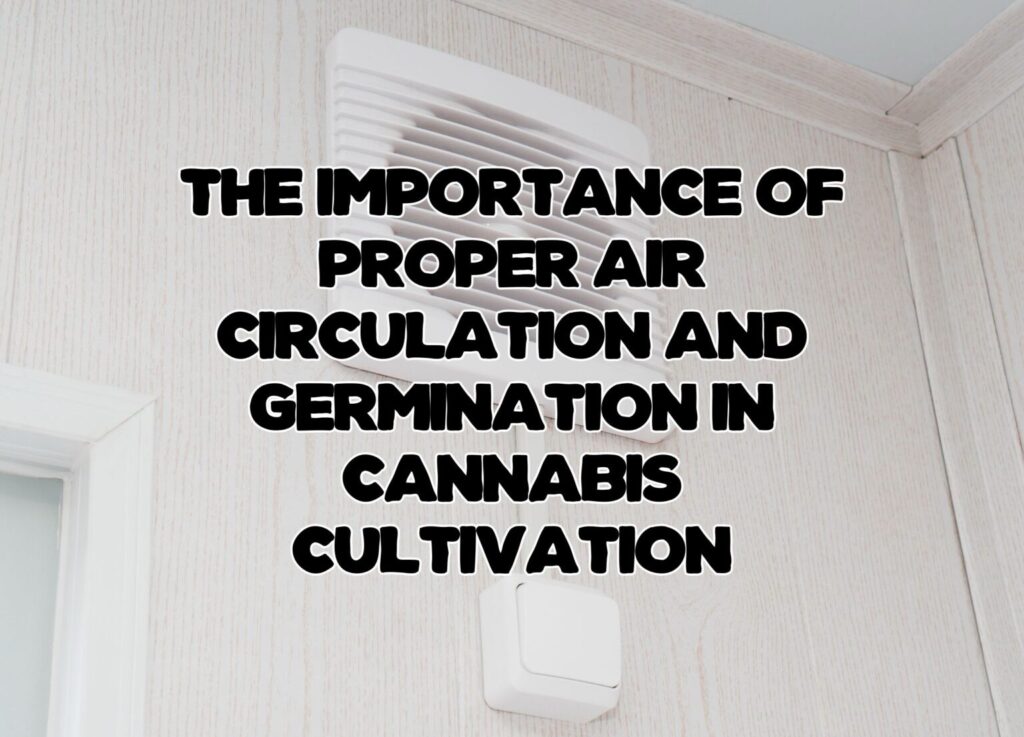Properly storing marijuana seeds is crucial for maintaining their viability and ensuring successful germination when you’re ready to plant them. Whether you’re a casual grower or a serious cultivator, understanding the best practices for storing marijuana seeds can make a significant difference in the quality and success of your crop. In this guide, we will explore the essential steps and conditions for storing marijuana seeds, focusing on both short-term and long-term storage solutions. By following these guidelines, you can ensure your seeds remain healthy and ready for planting whenever you decide to start your next growing cycle.

Why is Proper Storage of Marijuana Seeds Important?
Proper storage of marijuana seeds is essential to preserving their viability and ensuring high germination rates. When seeds are not stored correctly, they can lose their ability to sprout, leading to wasted resources and efforts. The main factors affecting seed viability are temperature, humidity, and light exposure. By controlling these factors, you can significantly extend the shelf life of your seeds and improve the chances of successful cultivation.
Storing marijuana seeds correctly helps maintain their genetic integrity, ensuring that the plants grown from these seeds will exhibit the desired traits. Proper storage also prevents seeds from being exposed to mold, pests, and other environmental factors that could damage them.
Additionally, understanding proper storage techniques can help you plan your growing cycles more effectively, allowing you to store seeds from one season to the next without worrying about a decline in quality. For further insights on maintaining the quality of your cannabis, refer to The Complete Guide to Cutting and Storing Weed, which offers valuable tips on preserving flavor and strength.

What Are the Best Conditions for Storing Marijuana Seeds?
To store marijuana seeds effectively, it’s important to control several environmental factors that can impact their viability. The key conditions to focus on are temperature, humidity, and light exposure. Here’s how you can create the optimal environment for storing your seeds:
1. Temperature
- Cool and Stable: The ideal temperature range for storing marijuana seeds is between 41°F (5°C) and 50°F (10°C). Seeds should be kept in a cool, stable environment to prevent them from aging prematurely or sprouting accidentally.
- Avoid Fluctuations: Temperature fluctuations can damage seeds. Ensure that the storage area maintains a consistent temperature.
2. Humidity
- Low Humidity: Humidity levels should be kept low, ideally around 20-30%. High humidity can lead to mold growth and rot, while very low humidity can dry out the seeds and damage them.
- Use Desiccants: Including desiccants like silica gel packs in your storage containers can help control moisture levels and keep the seeds dry.
3. Light Exposure
- Darkness: Marijuana seeds should be stored in a dark place as light can trigger premature germination and degrade seed quality. Keep them in opaque containers or wrap them in materials that block light.
By maintaining these conditions, you can significantly extend the shelf life of your marijuana seeds and ensure they remain viable for future planting. For practical storage solutions, consider using a Seed Saving Box, which provides a secure, organized, and optimal environment for your seeds. This container helps maintain the necessary conditions, protecting your seeds from environmental factors that could compromise their quality.

How to Store Marijuana Seeds Long Term
Storing marijuana seeds for the long term requires careful preparation and adherence to specific guidelines to ensure the seeds remain viable over extended periods. Here are detailed steps to effectively store your seeds long term:
1. Use Airtight Containers
- Glass Jars: Glass jars with airtight seals are excellent for long-term storage as they prevent air and moisture from reaching the seeds.
- Vacuum-Sealed Bags: Vacuum-sealed bags remove air from the storage environment, reducing the risk of oxidation and moisture exposure.
- Air Tight Seed Baggys

2. Add Desiccants
- Silica Gel Packs: Including silica gel packs in your storage containers helps to absorb any excess moisture, keeping the humidity levels low and preventing mold growth.
- Humidity Packs: Humidity packs can also be used to maintain a consistent humidity level within the container.
3. Refrigeration
- Cool Storage: Storing seeds in the refrigerator can significantly extend their lifespan. Ensure the temperature is stable and the seeds are kept in an airtight container to prevent moisture from condensing on them.
- Avoid Frequent Access: Minimize opening the container or the refrigerator to maintain a consistent environment.
4. Freezing
- Deep Freeze: For very long-term storage, freezing marijuana seeds is an option. Ensure that the seeds are completely dry before freezing to avoid ice crystal formation, which can damage them.
- Gradual Thawing: When ready to use the seeds, thaw them gradually at room temperature to prevent thermal shock.
5. Label and Organize
- Proper Labeling: Clearly label each container with the strain name, date of storage, and any other relevant information. This helps in tracking and organizing your seed collection.
- Organizers: Using a 140 Slots Seed Storage Organizer can help keep your seeds neatly arranged and easily accessible. This organizer comes with compartments and labels, making it easier to manage your seed inventory.
By following these steps, you can ensure that your marijuana seeds remain viable and ready for germination whenever you decide to plant them. Long-term storage requires careful management, but with the right techniques and tools, you can preserve the quality and genetic integrity of your seeds for years to come.

What Containers and Materials are Best for Storing Marijuana Seeds?
Choosing the right containers and materials is crucial for maintaining the viability of marijuana seeds during storage. The goal is to create an environment that protects the seeds from moisture, light, and temperature fluctuations. Here are some of the best options for storing marijuana seeds:
1. Airtight Containers
- Glass Jars: Glass jars with airtight seals are among the best options for storing seeds. They provide excellent protection against air and moisture. Mason jars or small glass containers with rubber seals work well.
- Vacuum-Sealed Bags: Vacuum-sealed bags are another excellent choice. By removing all air, these bags create a vacuum that helps preserve seed viability and protect against humidity and oxidation.
- Resealable Bags: For short-term storage, resealable plastic bags can be used. However, these should be placed in a secondary container like a glass jar to enhance protection.
- Mylar Bags: Mylar bags are a good option for both short-term and long-term storage. They provide a high barrier to light, moisture, and air.
3. Desiccants and Humidity Packs
- Silica Gel Packs: Adding silica gel packs to your storage containers helps to absorb any excess moisture and maintain low humidity levels.
- Humidity Control Packs: Humidity control packs can help keep the internal environment of the container stable, preventing both excessive dryness and moisture buildup.
4. Seed Storage Organizers
- Metal Seed Bin: A metal seed bin with safety locks, like the Seed Saving Box, offers a sturdy and secure storage solution. This type of organizer helps maintain an optimal environment and protects seeds from physical damage.
- Compartmentalized Containers: Using a compartmentalized organizer, such as the 140 Slots Seed Storage Organizer, can help keep your seeds well-organized and easy to manage. These containers often come with labels and additional features that facilitate better organization and protection.
5. Additional Materials
- Foil Wraps: Wrapping seeds in aluminum foil before placing them in containers can add an extra layer of protection against light.
- Seed Envelopes: Small paper seed envelopes can be used to store individual seed types before placing them in a larger airtight container. This helps in organizing and prevents cross-contamination.
By selecting the appropriate containers and materials, you can significantly enhance the longevity and viability of your marijuana seeds. Proper storage solutions help protect against environmental factors that could compromise seed quality, ensuring they remain healthy and ready for future planting.
If you are buying or growing, it is still a great idea to know which strains are the most potent to get the best bang for your buck!

Common Mistakes to Avoid When Storing Marijuana Seeds
Proper storage of marijuana seeds is essential to maintaining their viability, but even minor mistakes can lead to significant losses. Here are some common mistakes to avoid when storing your marijuana seeds and tips on how to prevent them:
1. Exposure to Moisture
- Mistake: Storing seeds in environments with high humidity or not using airtight containers can lead to moisture exposure, causing mold and rot.
- Solution: Always use airtight containers like glass jars or vacuum-sealed bags. Include desiccants like silica gel packs to absorb any excess moisture and maintain low humidity levels.
2. Temperature Fluctuations
- Mistake: Allowing seeds to experience rapid or frequent changes in temperature can damage them and reduce their viability.
- Solution: Store seeds in a cool, stable environment, such as a refrigerator or a cool, dark room. Avoid places with temperature swings, like near windows or in attics and basements.
3. Light Exposure
- Mistake: Storing seeds in transparent containers or places exposed to light can trigger premature germination or degrade seed quality.
- Solution: Use opaque containers or wrap seeds in aluminum foil before placing them in the container. Store them in a dark place to protect them from light.
4. Improper Sealing
- Mistake: Not sealing containers properly can allow air and moisture to seep in, compromising the seeds’ integrity.
- Solution: Ensure that all containers are sealed tightly. If using plastic bags, consider placing them inside another sealed container for added protection.
5. Lack of Organization
- Mistake: Storing seeds without proper labeling and organization can lead to confusion, loss of strain identity, and accidental exposure.
- Solution: Use a well-organized storage system with clear labels for each batch of seeds. The 140 Slots Seed Storage Organizer is an excellent tool for keeping your seeds sorted and easily accessible.
6. Ignoring Seed Health Before Storage
- Mistake: Storing unhealthy or damaged seeds can result in poor germination rates and wasted effort.
- Solution: Inspect seeds for signs of health, such as a hard, dark exterior, before storing them. Discard any seeds that appear cracked, moldy, or otherwise compromised.
7. Not Checking Stored Seeds
- Mistake: Failing to periodically check on stored seeds can mean that problems go unnoticed until it’s too late.
- Solution: Regularly inspect your seed storage for signs of moisture, mold, or other issues. This can help you catch and address problems early, preserving the rest of your collection.
By avoiding these common mistakes, you can significantly improve the chances of your marijuana seeds remaining viable over the long term. Proper storage practices are essential for maintaining seed health and ensuring successful future cultivation. For more information on choosing the right strains and ensuring their long-term viability, check out this guide on finding the best marijuana strains for pain relief.

How to Check the Viability of Stored Marijuana Seeds
Checking the viability of your stored marijuana seeds is crucial to ensure they are still capable of germinating and growing into healthy plants. Here are some effective methods to assess the viability of your seeds:
1. Visual Inspection
- Healthy Seeds: Viable marijuana seeds typically have a hard outer shell and are dark in color, ranging from brown to black. They should be free from cracks, spots, or other signs of damage.
- Non-Viable Seeds: Seeds that are pale, green, or show visible cracks and spots are likely non-viable. Such seeds often feel soft or crumble easily when pressure is applied.
2. Float Test
- Procedure: Place your seeds in a glass of distilled water and let them sit for about an hour.
- Viable Seeds: Healthy seeds usually sink to the bottom of the glass, indicating they are dense and full of nutrients.
- Non-Viable Seeds: Seeds that float on the surface are often hollow or damaged and unlikely to germinate. Be sure to only perform this test on a few seeds at a time, as prolonged exposure to water can damage seeds.
3. Germination Test
- Procedure: The most reliable method to test seed viability is to attempt germination. Place a few seeds between moist paper towels, put them in a plastic bag, and keep them in a warm, dark place.
- Viable Seeds: Seeds that sprout within a few days are viable and can be planted.
- Non-Viable Seeds: Seeds that fail to sprout after a week are likely non-viable.
4. Squeeze Test
- Procedure: Gently squeeze the seed between your fingers.
- Viable Seeds: Healthy seeds will be hard and resist pressure.
- Non-Viable Seeds: Seeds that crack or crumble easily under slight pressure are not viable.
5. Examine the Radicle
- Procedure: If you have pre-sprouted seeds, check the radicle (the first root that emerges during germination).
- Viable Seeds: A healthy radicle will be white and firm.
- Non-Viable Seeds: A radicle that is discolored or mushy indicates that the seed may not be viable.
Regularly checking the viability of your stored seeds ensures that you are ready for a successful planting season when the time comes. Proper storage conditions significantly enhance the longevity and viability of your seeds. For more detailed guidance on preserving the quality of your cannabis, refer to The Complete Guide to Cutting and Storing Weed, which offers valuable insights into maintaining flavor and strength.

What Are the Signs of Improperly Stored Marijuana Seeds?
Recognizing the signs of improperly stored marijuana seeds is essential for preventing wasted resources and ensuring successful cultivation. Improperly stored seeds can lose their viability, leading to poor germination rates and unhealthy plants. Here are some key indicators that your marijuana seeds have not been stored correctly:
1. Discoloration
- Signs: Healthy marijuana seeds are typically dark brown or black. If your seeds appear pale, green, or have unusual discolorations, they may have been exposed to unfavorable conditions.
- Cause: Discoloration can be caused by exposure to light, excessive moisture, or high temperatures.
2. Mold and Mildew
- Signs: The presence of mold or mildew, which often appears as white or green fuzzy spots, indicates moisture issues.
- Cause: High humidity levels or direct contact with water can lead to mold growth on seeds.
3. Brittle or Cracked Shells
- Signs: Viable seeds have a hard, intact outer shell. Seeds that are brittle, cracked, or crumble easily when handled are likely non-viable.
- Cause: Exposure to extreme dryness or fluctuating temperatures can cause the seed shells to become brittle.
4. Musty or Off Odor
- Signs: A musty or unusual smell coming from your seeds suggests mold or rot.
- Cause: This odor is typically a result of seeds being stored in damp or humid conditions.
5. Shriveling
- Signs: Seeds that appear shriveled or shrunken have likely lost their internal moisture content.
- Cause: Prolonged exposure to very dry conditions can dehydrate the seeds, making them non-viable.
6. Premature Germination
- Signs: Seeds that have started to germinate while in storage are a clear sign of exposure to moisture or warmth.
- Cause: Improper storage conditions that mimic the natural germination environment (warmth and moisture) can trigger premature germination.
7. Insect Infestation
- Signs: Finding insects, larvae, or signs of insect damage (such as small holes) indicates that your seeds have been compromised.
- Cause: Poorly sealed containers or storage in environments with pest issues can lead to insect infestations.
To prevent these issues, always store your marijuana seeds in optimal conditions, including cool temperatures, low humidity, and darkness. Using proper storage containers, such as the Seed Saving Box or the 140 Slots Seed Storage Organizer, can help maintain these conditions and protect your seeds from damage.
By being aware of these signs and taking steps to correct storage practices, you can ensure that your marijuana seeds remain viable and healthy for future planting. Properly stored seeds will lead to successful germination and robust plant growth, maximizing your cultivation efforts.

How to Label and Organize Marijuana Seed Storage?
Proper labeling and organization are crucial for managing your marijuana seed collection effectively. Clear labeling helps you keep track of different strains, storage dates, and other important details, ensuring that you always know what you have in stock and how long seeds have been stored. Here are some tips on how to label and organize your marijuana seeds:
1. Use Clear and Durable Labels
- Strain Name: Always include the strain name on the label. This helps you quickly identify the type of seeds you have stored.
- Storage Date: Write down the date when the seeds were stored. Knowing how long the seeds have been in storage helps you monitor their viability.
- Additional Information: If applicable, include details such as the source of the seeds, the batch number, and any specific storage instructions.
2. Labeling Materials
- Waterproof Labels: Use waterproof labels to ensure that the information remains legible even if exposed to moisture.
- Permanent Markers: Write labels with permanent markers to prevent fading over time.
- Pre-Printed Labels: Consider using pre-printed labels that come with organizers like the 140 Slots Seed Storage Organizer, which often include labels and stickers designed specifically for seed storage.
3. Organizing Containers
- Compartmentalized Containers: Use containers with compartments, such as the Seed Saving Box or the 140 Slots Seed Storage Organizer, to keep seeds separated and organized. Each compartment can hold a different strain, making it easy to locate and access seeds.
- Airtight Jars: Store seeds in airtight jars with clear labels on the lids or sides. This method is particularly useful for long-term storage.
- Seed Envelopes: Use small seed envelopes to store individual strains. Label each envelope and then place them in a larger airtight container for added protection.
4. Categorize by Strain and Date
- Strain Categories: Group similar strains together. For example, keep all indica strains in one section, sativa strains in another, and hybrid strains in a third section. This organization helps you find specific types of seeds quickly.
- Date Order: Organize seeds by storage date, with the oldest seeds at the front or top. This method ensures that you use older seeds first, maintaining the viability of your collection.
5. Digital Records
- Spreadsheet: Maintain a digital record of your seed inventory using a spreadsheet. Include details such as strain name, storage date, and quantity. Update the spreadsheet whenever you add or remove seeds from storage.
- Inventory Apps: Consider using seed inventory apps designed for cannabis growers. These apps can help you track your seeds, set reminders for germination, and manage your collection efficiently.
6. Regular Checks and Updates
- Periodic Reviews: Regularly check your seed storage to ensure that labels are still legible and that seeds are stored correctly. Update labels and records as needed.
- Rotation: Rotate your seed stock periodically to ensure that you are using older seeds first, maintaining the overall viability of your collection.

By implementing these labeling and organizing strategies, you can maintain a well-managed marijuana seed collection, ensuring that you always know what you have and how to best use it. Proper organization not only helps in maintaining seed viability but also makes the entire cultivation process smoother and more efficient. For more insights on enhancing your cannabis experience, explore The Complete Guide to Using Cannabis, which offers tips on getting the most out of your cannabis journey.

As an Amazon Associate we earn from qualifying purchases through some links in our articles.




